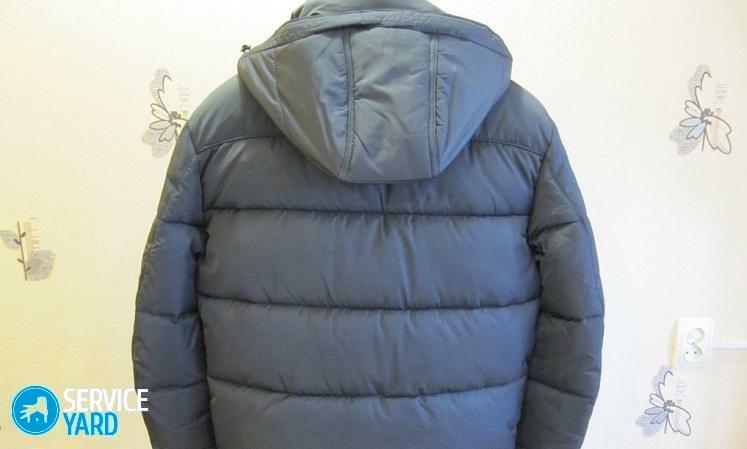 Mold, including black - a fungus that reproduce by spores. The most favorable for mold environment - surface in a room with high humidity, that is, in the kitchen, the bathroom, ceilings the upper floors of apartment buildings, attics, basements and storage rooms, in dark rooms, where not exposed to sunlight and fresh air.
Mold, including black - a fungus that reproduce by spores. The most favorable for mold environment - surface in a room with high humidity, that is, in the kitchen, the bathroom, ceilings the upper floors of apartment buildings, attics, basements and storage rooms, in dark rooms, where not exposed to sunlight and fresh air.
This fungus affects any surface - from concrete and metal to cloth and paper. If you do not remove mold stains appeared immediately, they will grow at a rapid rate.
Content
- Separate removing mildew
- People's ways of dealing with the fungus
- chemical agents
- Involvement of health services
- How to prevent mildew in the house
Separate removing mildew
If you notice mold stains on the ceiling or walls, they definitely need to be removed, otherwise the fungus will spread. Just take action to dry the room, most likely, will not be enough, especially if the mold is already quite a lot.
-
 The first step of removing the mold - mechanical. It should be scraped all traces of the fungus from the affected surface with a spatula, brush, spatula or other sharp instrument. Unfortunately, this only works on smooth surfaces. For porous materials such as wood or brick there is no hope, even if you have removed the top layer, the mold is likely to penetrate deep inside. We'll have to dismantle all floors and get rid of it.
The first step of removing the mold - mechanical. It should be scraped all traces of the fungus from the affected surface with a spatula, brush, spatula or other sharp instrument. Unfortunately, this only works on smooth surfaces. For porous materials such as wood or brick there is no hope, even if you have removed the top layer, the mold is likely to penetrate deep inside. We'll have to dismantle all floors and get rid of it. - The second stage - washing. Yet quite common household chemicals, such as dish detergent or cleaning the bathroom. After washing, the surface should be carefully and wipe dry.
- Third, the most important stage - processing antiseptic, prevents the fungus. These can be chemical compositions and folk remedies.
- The fourth stage - final drying of the treated site. It is necessary to ventilate the room, open the window, turn on the fan or air conditioner, and if possible to ensure the influx of sunlight.
In the process of mold removal it is very important to take care of personal safety. Treatment should be done with gloves, eye protection goggles or a mask, and wear a gauze bandage or respirator to prevent spores into the lungs and nasal passages.
In addition, you need to carefully hide furniture, walls and other surfaces near the place that you are going to clean the mold. Otherwise, during the cleaning of fungus spores may scatter around the house and settle down in other places, where before there was no mold.
If fungal lesions are small, you can simply treat the affected area potent compound, and then rinse thoroughly with water and dry.
People's ways of dealing with the fungus
 The simplest and most common way to combat mold on the walls and ceilings - ordinary baking soda. It is safe for humans and animals, but quite effective.
The simplest and most common way to combat mold on the walls and ceilings - ordinary baking soda. It is safe for humans and animals, but quite effective.
To prepare soda solution you need to take a tablespoon of powder per cup of water. Pour the solution into a spray bottle and carefully spray the affected area, Let it dry, then rinse with water.
Another popular and safe health facility - vinegar. It is often used in admixture with soda. Vinegar is not diluted with water, pour into a spray bottle and spray it surface. If you want to add it to a solution of soda, then a glass of water and a tablespoon of baking soda, take 3-4 tablespoons of vinegar.
after processing it is necessary to ventilate the room. By the way, the vinegar - a good preventive folk remedy for mold on the walls and tile joints in the bathroom. They can be treated with the surface once or twice a month for cleaning.
A good alternative to vinegar - lemon acid or lemon juice. They have the same properties as the vinegar. For the solution you need acid tea spoon on a glass of water.
 To remove mold, vinegar is often mixed with hydrogen peroxide: it is also safe for humans and animals. Vinegar and peroxide are mixed in a ratio of 1: 1. If you take only the peroxide, then it does not need to be diluted with water.
To remove mold, vinegar is often mixed with hydrogen peroxide: it is also safe for humans and animals. Vinegar and peroxide are mixed in a ratio of 1: 1. If you take only the peroxide, then it does not need to be diluted with water.
Simply spray on the surface and leave for 15 minutes, then rinse. In the case of peroxide is best at first to handle a small piece of the surface, to ensure that the color and texture of the walls or tiles will not be affected, and only then proceed to a large-scale action.
Among the more expensive, but also friendly and natural products for the removal of mold fungi are also found tea tree oil and grapefruit seed extract. A few drops of oil or extract is diluted in a glass of water, and then sprayed with the affected area and are dried. Rinse with water, these compositions are not necessary. The procedure can be repeated several times.
Another affordable (and safe) an anti-fungus on the walls – aqueous solution of borax. Per liter of water take approximately 100 grams of powder. The solution is applied to the mold, and then clean the affected portion of a brush and left to dry. After drying, the mold is removed the remains of cloth, and the surface is again treated with borax solution - it creates a barrier to fungal spores.
To remove mold from the walls is also well suited ammonia. But to work with it is necessary to use a respirator. Ammonia diluted with water in proportion 1: 1, they rub the affected surface, and a few hours later washed off with water.
chemical agents
 If you are ready to fight mold on the walls in the apartment use of more toxic compounds, you can start to buy in the store regular bleach, Prepare an aqueous solution (1 part bleach to 10 parts water) and process them to the affected area.
If you are ready to fight mold on the walls in the apartment use of more toxic compounds, you can start to buy in the store regular bleach, Prepare an aqueous solution (1 part bleach to 10 parts water) and process them to the affected area.
Bleach should be careful: it can ruin the paint or glossy finish, so it is necessary to check its effect in an inconspicuous place.
You can also purchase special chemical compoundsDesigned precisely to deal with mold, such as Dali, Alpa, Biotol Spray, Olympus Stop mildew and others. They can be found in hardware stores.
Before using such compositions need carefully read the instructions. Most likely, these funds are toxic to work with them, you'll need a dust mask and gloves. However, they are very effective, and if folk remedies for fungus on the walls and in hidden corners of the house did not help, you should try a more active substances.
Involvement of health services
 If you do not have time to deal removing the mold from the walls in the apartment yourself, or your previous attempts did not give the desired result, you should seek help from health services.
If you do not have time to deal removing the mold from the walls in the apartment yourself, or your previous attempts did not give the desired result, you should seek help from health services.
Employees of such companies They have great experience in the fight against the pernicious fungus, they can bring the black mold on the walls and the ceiling, remove the mold in the bathroom, as well as to remove it from the brick and wood.
They use devices (such as a thermal imager) to find all the hearths and molds used are safe for human and animal chemical compositions to bring the fungus. They also will be able to give you advice about how to avoid the appearance of mold in your home in the future.
How to prevent mildew in the house
 Mold, particularly black - is not only ugly but also dangerous to health. Inhalation of spores of this fungus can cause an allergic reaction, asthma attack, headache, indigestion, problems with the skin and joints. Some types of mold spores are carcinogenic.
Mold, particularly black - is not only ugly but also dangerous to health. Inhalation of spores of this fungus can cause an allergic reaction, asthma attack, headache, indigestion, problems with the skin and joints. Some types of mold spores are carcinogenic.
That the house would not start the fungus, it is necessary to maintain the proper balance of temperature and humidity. The room should be warm, but dry enough to mold could not actively proliferate.
If mold occurs due design flaws premises, Will have to spend effort and money on their removal, that is to do in repairing the battery, clean the ventilation, repair leaking taps, to patch the roof, insulate the walls, and so on.
Otherwise, the mold will appear again and again. Even if you regularly clean it, it will just be deterring the rush, but not to victory over the enemy.
If your home in general, everything is in order, and the fungus will still start, have review the operation of habit premises. If the apartment will be dry and bright, then you do not have to spend time on the removal of mold from the walls and ceiling.
- Ventilate the room.
- Do not lock the door to the bathroom right after exiting the shower. Turn on the fan during and after washing.
- Do not dry clothes in the room. Water the flowers moderately, do not turn the windowsill in the greenhouse.
- Get a dehumidifier or air conditioner use.
- Apartment to let in the sunlight. Mold afraid of sunlight.



